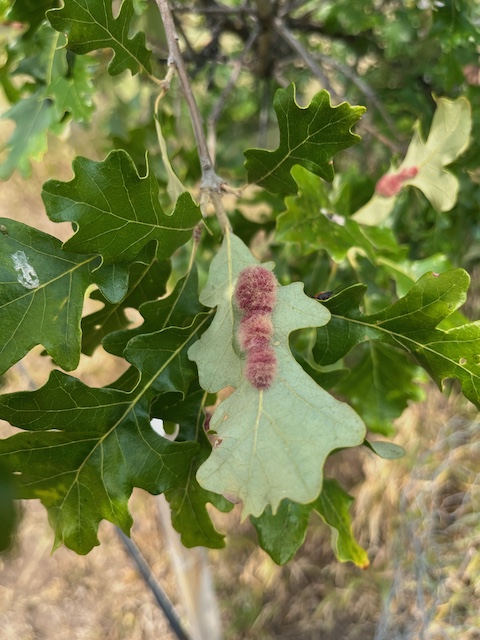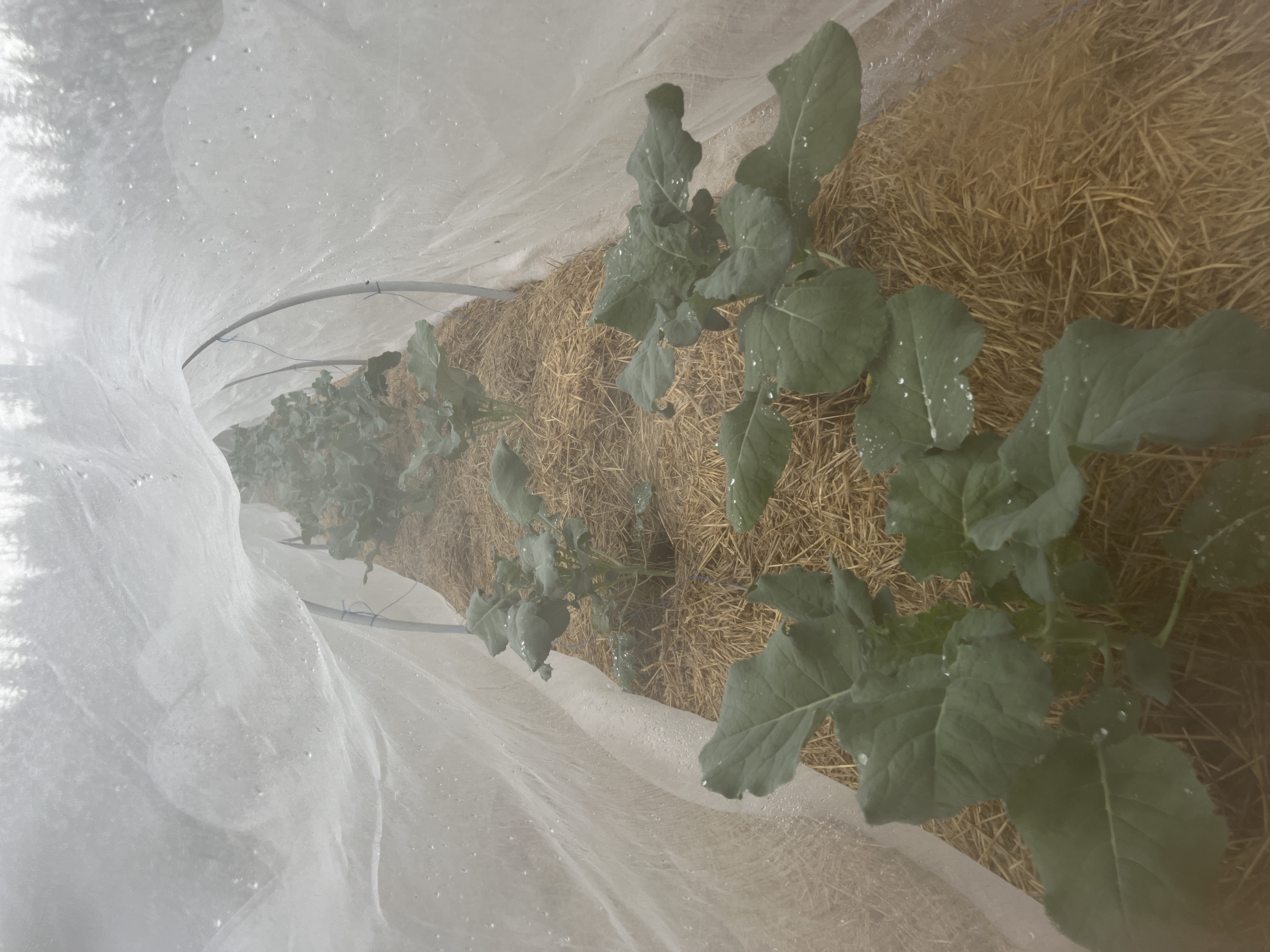Cosmetic, nuisance or damaging insects
When to act and when to let it be
When it comes to insects, it’s a question of balance. No gardener wants a pest outbreak but do ask yourself if the problem is cosmetic, a mere nuisance or causing actual damage.
If you have a pest outbreak, can you tolerate a little damage? What percentage of the plant is affected? There’s a big difference between a little damage on a few leaves versus the entire plant. Healthy garden ecosystems and healthy plants can cope with a few pests. Does your garden ecosystem encourage beneficials?
Cosmetic
Just leave it alone
Sometimes the effect of insects on plants is merely cosmetic. Leaf rollers or leaftiers, are moth larvae that roll, tie or fold together leaves of trees, shrubs and other perennials such as delphinium leaftier. It looks odd to have a plant with folded or rolled leaves, but is it harming the plant? Most of the time, the answer is no.
There is a myriad of gall-causing insects which cause weird growths on leaves, stems or other parts of the plant. Leaf galls come in all shapes, colours and textures: some are bumpy or have long finger-like growths while others are hairy, sticky, spiny, or woody. Galls look very odd indeed, such as the ash flower gall mite or Cooley spruce gall adelgid. They are sometimes mistaken for diseases – which they are not. They do not harm or kill the plants.
The woolly oak leaf gall is another great example. These weird furry galls are caused by a tiny, stingless cynipid wasp. The adult wasp lays its egg into the leaf tissue and injects a plant hormone which stimulates the surrounding cells of the leaf to produce this strange looking tissue. The egg hatches into a larva which then is protected and nurtured inside the leaf tissue which is high in protein and carbohydrates to provide the developing larva with a readily available food source.

Some gardeners are tempted to pluck off leaves with galls, but it’s much better to leave them on the tree. As long the leaves are green, they are still photosynthesizing and making food for the plant. To reduce the number of galls in the future, rake up fallen leaves in the fall to prevent the pupae from overwintering in the soil beneath the plant.
Galls are an example of commensalism: a relationship in which one organism benefits while the other is neither harmed nor helped.
Insecticides are completely ineffective for leaf rollers and galls because the insects are protected inside the leaf or other parts of the plant. Can you tolerate some odd-looking galls or rolled leaves? If so, great. There is no harm done to the plants and these oddities make for interesting conversation with your gardening buddies.
Nuisance
Don't panic but there are things you can do to reduce the numbers
Sometimes insects appear in vast numbers like maple bugs or ants. Neither of these do any actual harm to plants or soil, but are inconvenient and annoying, in short, a nuisance.
Ants for example may create lots of anthills in your lawn or garden in a dry year but tend to decline in wetter conditions. It may look ugly to you, but the ants are actually doing you a favour by aerating and improving your soil. Maple bugs are known to appear in the thousands on the sunny side of your house or garage but they’re not harming anything. A quick blast of plain water from your hose or vacuuming them with a shop vac can reduce their numbers if the sight of them bothers you.
Although they cause damage in the short term, forest tent caterpillars belong somewhere between the “big nuisance” and damage categories. Outbreaks are sporadic but when they happen, the number of caterpillars are staggering. Fortunately, these large outbreaks are over and done with in a year. Nature takes care of the problem: caterpillar populations drop dramatically because they are killed by disease and predators and/or because environmental conditions are not right for their continued survival. During one outbreak year, we heard from hundreds of gardeners expressing strong emotions about their disgust of these critters. Some could not be convinced that although the caterpillars can defoliate trees, healthy trees can survive and recover from these outbreaks, and there are ways to minimize the damage. Our favourite call came from a lovely 90-year-old gardener who told us how much she enjoyed blasting them out of her tree with her grandson’s SuperSoaker™. We loved that.
Great advice: knock them out of the tree with a hard blast of water and then squish them. That and more is all in the article.
Damaging
There are lots of pesticide-free strategies for dealing with damaging insects
Growing high-value ornamental plants like trees and shrubs or food plants like fruits and vegetables, damage-causing insects are high stakes in the garden. Instead of reaching for insecticides, there are many ways to prevent, reduce or even eliminate insects that cause damage to your food crops and ornamental plants.
Create a barrier

Growing brassicas like cabbage, cauliflower, broccoli, kale or Brussels sprouts is a challenge on the prairies in regions where canola is grown. Canola is a close relative of the brassicas we eat and is prone to many insect problems including cabbage butterfly moth, flea beetles and cabbage looper, and monocultures attract a lot of these pests.
The simplest way to prevent damage is to cover your plants with row covers over hoops. Be sure to secure the edges of the fabric to prevent these insects from getting underneath this protective barrier. Keep the covers on until harvest and you’ll have perfect, pesticide-free vegetables to eat and enjoy. The row cover and hoops can be re-used for years and is a simple and effective way to prevent these insect problems entirely. Similar barrier methods can be used to prevent apple maggot fly, carrot rust fly, onion root maggot and root maggots in brassicas.
Shallow tilling
Use sparingly and only for confirmed infestations
In situations where the pupae of insects overwinter in garden soil, cultivation methods such as shallow tilling in fall can be reduce an existing insect problem for insects which overwinter as pupae in the garden.
This method is effective for Colorado potato beetle, wireworm, cutworms and root maggots all overwinter as pupae in soil. Shallow tilling in the fall exposes the pupae to cold and predators like birds which helps to reduce populations of these pests. Use this method sparingly and only when you have a confirmed infestation.
Tilling is hard on soil, so we recommend only doing so when infestations are severe. If you decide to shallow till, avoid using a rototiller. A hard rake is enough disturb the soil to a depth of 2” to expose the pupae. Tillers tend to disturb the soil to a much deeper level.
Rotating where you grow vegetables goes hand in hand with shallow tilling. Rotating your crops to different locations helps to avoid a build-up of pest insects.
Washing, sucking, picking and squishing
Sometimes yucky, but simple and effective
If the aphids are localized on a single stem or branch, simply wipe them off or prune out the branch. A spray of plain water is effective for knocking out small soft bodied insects like aphids as shown in the video. They fall to the ground but cannot climb back up.
Water doesn't work well on hard bodied insects, like flea beetles which can be very damaging when they appear in large numbers on a cabbage plant. What should you do? Any small, hard bodied insects can simply be sucked up with a wet/dry shop vac. Use the brush attachment to prevent damage to the leaves. Pour a 1/2" of water into the bottom of the wet/dry shop vac to drown them or just leave the vac in the sun for a couple of hours to kill them.
What if you do nothing at all? Let’s look at the experience of one gardener:
"I have a large yard and garden and have used woody mulch and leaf litter everywhere for some years now. There is a large dogwood at the back of my property that I don’t frequent often. One day, I noticed that many of its leaves were curled and twisted and a bit sticky to the touch. On closer examination I found the shrub infested with aphids, which is common for dogwood. I made a mental note to haul the hose back there to wash off the aphids but when I returned to look at the dogwood several days later, found many ladybugs, and many more ladybug larvae making fast work of the aphids. New leaves replaced the damaged leaves, and the dogwood looked excellent again a month later without any intervention at all."
What’s this gardener’s secret? Mulch and leaf litter provides habitat for beneficials. Chances are good that this gardener does not use insecticides, so the population of beneficials are ready to go when aphid pests appear.
When to use biologicals
Mostly suited to greenhouses
We are often asked about buying commercially-raised ladybugs and other biologicals to release in the garden. This works well in closed environments such as home greenhouses but when they are released in the garden, they tend to disburse and fly away. Another problem with purchased ladybugs is that some species purchased from other areas are not native to our region, especially in northern Canada. They may compete with native populations of ladybugs and reduce their numbers.
For better ways of attracting and supporting beneficials in the garden please see Creating biodiversity in your yard.

